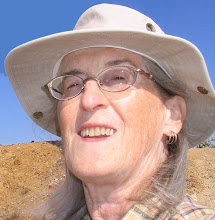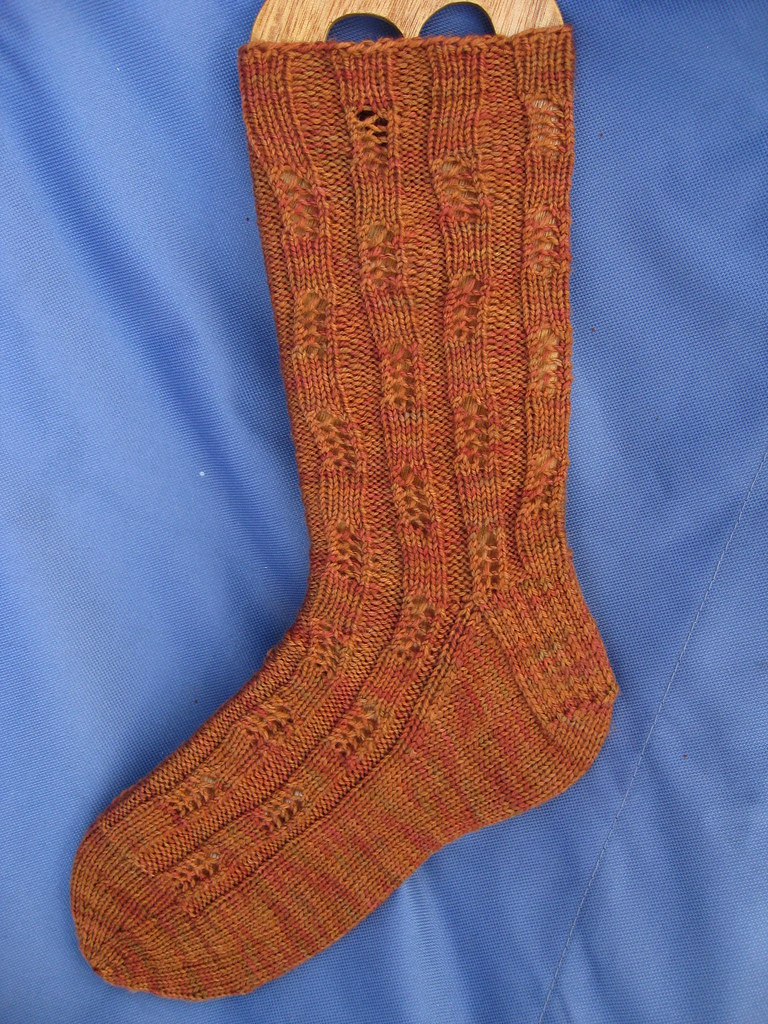The Stem Socks are finished at last. It must be at least six months since I started them, possibly more. I remember that I intended them to be Spring/Summer socks; that's why I picked the light green color with occasional random flecks of pink.

The pattern wasn't particularly difficult; in fact it was quite simple. It was just that I kept putting the socks aside to go off on other knitting adventures. There's a fine line between "multiple projects" and "UFO's." If one is not careful, an active project upon which one knits happily every few days may drift apart from the collection and cross the border into UFO-land.
And I absolutely hate UFO's. They give me an itchy twitchy feeling. Right between the shoulder blades. No matter how deeply buried in a closet the object may be, I know it's there. And I know that because it is not finished, I have WASTED THE YARN. This is the ultimate sin to one raised in a culture of thrift.
 I began another sock right away and knit 4-5 inches down the leg before realizing that it was not going to work. The yarn is Lorna's Laces Shepherd Sock in "Shadow" and I was using the "Slipped Stitch Rib" pattern from Sensational Knitted Socks. I've knit this pattern once before and found that it does a great job of mixing up the colors for yarn that is too stripey (which LL unfortunately is). But 54 stitches on 2.25mm needles was a wee bit tight. And the overall look of the knitting was somehow too open--as if I had knit it on huge needles. So, off to the frog pond for this little guy.
I began another sock right away and knit 4-5 inches down the leg before realizing that it was not going to work. The yarn is Lorna's Laces Shepherd Sock in "Shadow" and I was using the "Slipped Stitch Rib" pattern from Sensational Knitted Socks. I've knit this pattern once before and found that it does a great job of mixing up the colors for yarn that is too stripey (which LL unfortunately is). But 54 stitches on 2.25mm needles was a wee bit tight. And the overall look of the knitting was somehow too open--as if I had knit it on huge needles. So, off to the frog pond for this little guy.
I thought of redoing the cast-on with 60 stitches on 2.0mm needles, but then decided to have another browse through my SKS and MoreSKS books to see if I could find a different pattern that might work to break up the striping. And in MoreSKS I found something called "Cross Stitch Block" which has some stitch-slipping and stitch-crossing going on. Here's a picture I grabbed from a Raveler named Jenn who did a lovely job of knitting these socks. If mine are half as nice, I'll be pleased.

 And in the meantime I have also begun fiddling around with this beautiful yarn. The pattern is going to be called "Coriolis." I won't actually know if it will work at all until I've turned the heel. Might be a total bust. But I'm feeling optimistic.
And in the meantime I have also begun fiddling around with this beautiful yarn. The pattern is going to be called "Coriolis." I won't actually know if it will work at all until I've turned the heel. Might be a total bust. But I'm feeling optimistic.






























